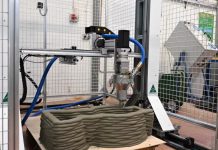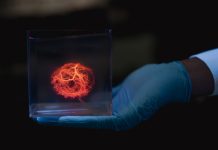A team of roboticists from the University of California, San Diego, recently announced a collaboration with researchers from the BASF corporation to create a device that can pick up, hold, and release objects as it comes off the 3D printer.
According to researchers, the soft gripper, equipped with built-in gravity and touch sensors, does not need any electronics to work, adding that no such gripper existed before this work.
“We designed functions so that a series of valves would allow the gripper to both grip on contact and release at the right time,” said Yichen Zhai, a postdoctoral researcher in the Bioinspired Robotics and Design Lab at the University of California San Diego and the leading author of the paper.
Zhai explained that it is the first time such a gripper can grip and release at the same time by only turning the gripper horizontally, which causes a change in the airflow in the valves, causing the gripper’s two fingers to release.
In particular, this fluid logic enables the robot to remember when it has grasped and is holding an object, and it releases the thing when it detects the weight of the object pushing to the side while rotating horizontally.
The research team stated that soft robotics provides the possibility of allowing robots to interact with humans and fragile things in a safe manner.
Thus, this gripper can be put on a robotic arm for industrial manufacturing, food processing, and fruit and vegetable handling.
It can also be attached to a robot and used for study and exploration, and it can also operate untethered, using merely a bottle of high-pressure gas as its power supply.
Researchers also noted obstacles they encountered in the experiment as most 3D-printed soft robots are stiff; they have a lot of leaks when they come out of the printer; and they require a lot of processing and assembly after printing to be useable.
The researchers said they overcame these challenges by inventing a new 3D printing approach that involves the printer nozzle tracing a continuous path through the whole pattern of each printed layer.
With this technique, the team said it is less likely that the printed object will have faults and leaks, which are particularly prevalent when printing on soft materials.
The study was published in the June 21 issue of Science Robotics.




















